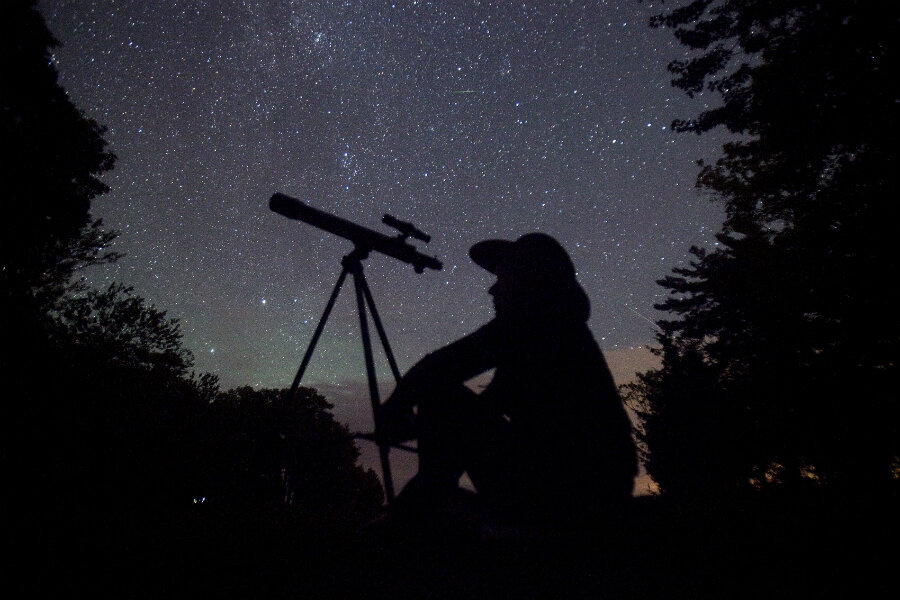Look up: a remarkable Perseid meteor shower is coming
Loading...
Nature’s summer fireworks will be even more exciting this year – the annual Perseid meteor shower that arrives during the second week of August will be experiencing what astronomers call an “outburst” this year. This means that stargazers can expect to see more than double the usual number of meteors streaking through the sky on the peak nights of August 11 and 12.
“Under perfect conditions, rates could soar to 200 meteors per hour,” said Bill Cooke, of NASA’s Meteoroid Environments Office in Huntsville, Ala. The last time the shower was in an “outburst” mode was 2009, according to NASA.
The Perseid shower may look like a pack of tiny comets crossing the night sky, but in actuality they are the result of the Earth crossing a trail of comet dust. The Swift-Tuttle comet orbits the sun every 133 years: as it does, it leaves a path of debris behind it, which we run up against annually.
When the Earth brushes up against this trail, the debris that hits our atmosphere disintegrates, causing the flashes of light visible from Earth. These pieces of comet dust entering the atmosphere are called meteors. They can be as small as a grain of sand, according to Space.com, but they are traveling at speeds of 132,000 miles per hour.
“The meteors you’ll see this year are from comet flybys that occurred hundreds if not thousands of years ago,” said Dr. Cooke. “And they’ve traveled billions of miles before their kamikaze run into Earth’s atmosphere.”
Normally the Earth’s atmosphere hits the edge of the debris stream as our planet make its path around the sun. This year, however, the reams of Swift-Tuttle dust trails will be pulled closer by Jupiter’s gravity, and the Earth will hit at a more central and dense point in the comet dust trail.
For sky-gazing Earthlings hoping to see the resulting “outburst,” the best time to view is between midnight and dawn on August 12. Although the Perseids technically span several weeks, astronomers are recommending this date and August 13 for prime viewing. To avoid interfering moonshine on the night of August 11, astronomers recommend waiting until after the moon sets at 1 a.m. local time, early in the morning of August 12. The sky show can be viewed in the Northern Hemisphere down to the mid-southern latitudes.
NASA is preparing for the shower in several ways, such as live broadcasting the peak hours for those with light-polluted, smoggy, or overcast skies. And while the meteors won't affect those of us on the Earth's surface (the meteors burn up about 50 miles above Earth), NASA's Meteoroid Environment Office has been working to make sure that this year’s profusion of comets does not interfere with US satellites and spacecraft, or with the International Space Station.





